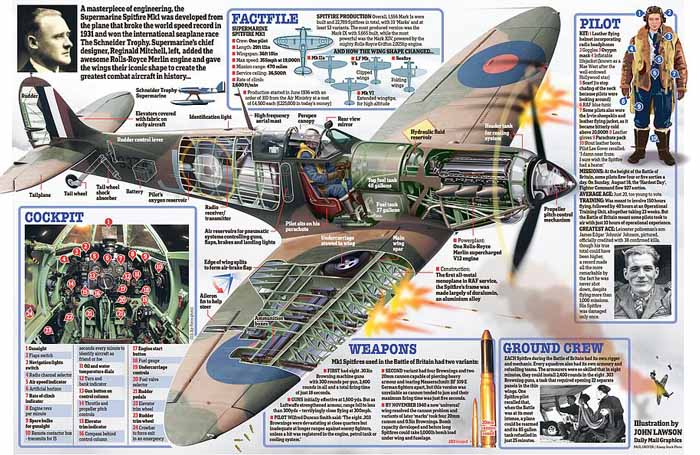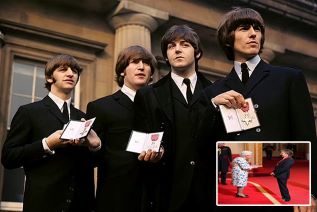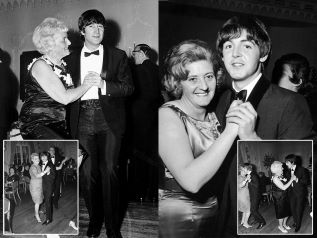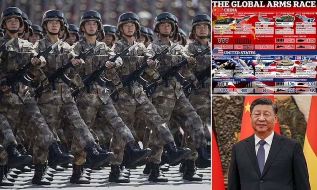Supermarine S.68, Kiprah Awal Rolls-Royce Dominasi Jagat Dirgantara Global
The Supermarine S.68: The 343 mph Plane that Smashed World Record in 1931
Editor : Ismail Gani
Translator : Novita Cahyadi

ROLLS-ROYCE punya sejarah panjang di jagat dirgantara dunia khususnya Inggris, sejak 1931 berperan penting mendukung perolehan penghargaan bergengsi Schneider Trophy, prestasi yang menjadikan Rolls-Royce sebagai leader di kedirgantaraan global.
Ditandai oleh aksi pesawat amfibi balap Inggris yang meraih rekor dunia dan dikenal sebagai Supermarine S.6B.
Pesawat pemenang trofi Schneider ini diujicobakan oleh penerbang jet tempur Letnan John Boothman nomor seri pesawat S1595 berkecepatan 547,19 km per jam, terbang tujuh putaran sempurna dari jalur segitiga di atas Solent, antara Isle of Wight dan daratan Inggris.
Tujuh belas hari kemudian, Letnan George Stainforth dengan serial S.6B S1596 memecahkan rekor kecepatan udara dunia saat itu, kecepatannya 655,67 km per jam.
Pesawat itu merupakan gagasan Reginald Mitchell, seorang mantan insinyur lokomotif dari Stoke, yang hasratnya untuk terbang telah menjadikannya perancang kepala muda di Supermarine, sebuah perusahaan yang berbasis di Southampton dengan spesialisasi mengembangkan penerbangan maritim.
Pada 1931, pemenang final Schneider Trophy Mitchell, Supermarine S6, mencapai kecepatan 655,67 km per jam, sebagai pemecah rekor dunia.
Prestasi inilah yang menyebabkan Kementerian Udara Inggris mendorong Supermarine untuk membangun pesawat tempur militer baru yang menggabungkan teknologi canggih ini.
Upaya awal Mitchell adalah kegagalan yang menyedihkan.
Disebut sebagai Tipe 224, pesawat tersebut didukung sayap engkol tebal, permanen, mesin Rolls-Royce Goshawk yang tidak dapat diandalkan yang menggunakan sistem pendingin evaporatif yang rumit.
Pilot uji coba Jeffrey Quill menggambarkannya sebagai ´sarapan seekor anjing, bukan desain yang sangat bagus.´
Apa yang merintangi Mitchell bukan hanya karena tidak berpengalaman dengan pesawat, tetapi juga kesehatannya yang buruk. Pada 1933 dia didiagnosis menderita kanker, di mana ia harus menjalani operasi besar dan pemasangan kantong kolostomi permanen. Namun dia tetap menjadi sosok yang ulet dan tekun.
Setelah kembali ke Supermarine, dia menyodorkan pesawat yang jauh lebih ramping, lebih cepat, lengkap dengan undercarriage yang dapat ditarik dan sayap elips.
Ada juga mesin yang jauh lebih efisien, bertenaga, Rolls-Royce Merlin yang baru dibuat, yang kemudian menjadi andalan Angkatan Udara Inggris pada Perang Dunia II.
Desain yang diubah tampak seperti pemenang potensial, keyakinan yang diperkuat oleh penerbangan perdana prototipe pada 5 Maret 1936 oleh pilot uji Mutt Summers. "Aku tidak ingin ada yang tersentuh," katanya setelah dia mendarat.
Di tengah semua pujian ini, satu-satunya keberatan Mitchell adalah nama pesawat karyanya.
Dia menyukai Shrew atau Snipe, tetapi manajemen Supermarine bersikeras pada Spitfire. "Hanya nama konyol yang akan mereka pikirkan," kata Mitchell.
Pemerintah Inggris, yang sangat prihatin dengan kemajuan industri militer Nazi, senang dengan uji coba awal dan memesan pesawat 310 Spitfires untuk dikembangkan sebagai jet tempur seperti dilansir MailOnline.
THE ROLLS-ROYCE was instrumental in helping Britain win the prestigious Schneider Trophy in 1931, a victory that established Rolls-Royce as a leader in aerospace.
The British racing seaplane that established the record was known as the Supermarine S.6B.
The winning Schneider flight was piloted by Flt. Lt. John Boothman in aircraft serial number S1595 at a speed of 340.08 mph (547.19 km/h), flying seven perfect laps of the triangular course over the Solent, between the Isle of Wight and the British mainland.
Seventeen days later, Flt Lt. George Stainforth in S.6B serial S1596 broke the world air speed record, reaching 407.5 mph (655.67 km/h)
The plane was the brainchild of Reginald Mitchell, a former locomotive engineer from Stoke, whose passion for flying had made him the youthful chief designer at Supermarine, a Southampton-based company that specialised in maritime aviation.
In 1931 Mitchell´s final Schneider Trophy winner, the Supermarine S6, had attained an astonishing speed of 407mph, smashing the world record.
It was this achievement that led the Air Ministry to encourage Supermarine to build a new military fighter that incorporated this cutting edge technology.
Mitchell´s initial effort was a dismal failure.
Called the Type 224, it featured a thick cranked wing, fixed, trousered undercarriage and the unreliable Rolls-Royce Goshawk engine that used a complex evaporative cooling system.
The test pilot Jeffrey Quill described it as ´a dog´s breakfast, just not a very good design.´
What hindered Mitchell was not just his inexperience with landplanes but also his poor health. In 1933 he was diagnosed with cancer, for which he had to undergo major surgery and the installation of a permanent colostomy bag. But he was a resilient, determined man.
Having returned to Supermarine, he came up with a far more streamlined, faster plane, complete with a retractable undercarriage and elliptical wings.
There was also a much more efficient, powerful engine, the newly created Rolls-Royce Merlin, which was to become the mainstay of the wartime RAF.
The revamped design looked like a potential winner, a belief that was reinforced by the maiden flight of the prototype on March, 5, 1936, by test pilot Mutt Summers. ´I don´t want anything touched,´ he declared once he had landed.
Amid all this praise, Mitchell´s only objection was to the title of the new plane.
He favoured the Shrew or the Snipe, but the Supermarine management insisted on Spitfire. ´Just the sort of silly name they would think of,´ Mitchell said.
The Government, deeply concerned about the pace of Nazi rearmament, was delighted with the early trials and placed an initial order for 310 Spitfires.















